It's a New Day in Public Health.
The Florida Department of Health works to protect, promote, and improve the health of all people in Florida through integrated state, county, and community efforts.
Hazardous Marine Life Along Florida's Coasts
Contact: Florida Health
- 850-245-4444
- health@flhealth.gov
-
Mailing Address
Florida Health
4052 Bald Cypress Way
Tallahassee, FL 32399
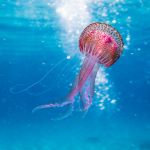 Navigating Florida’s Ocean Hazards
Navigating Florida’s Ocean Hazards
Florida’s coastal waters offer a vibrant underwater world, yet they also harbor marine species that can pose risks to swimmers, snorkelers, and divers. Understanding the behavior, habitats, and safety precautions associated with these creatures is essential for safe ocean enjoyment and preserving Florida’s natural diversity.
Below, explore our dropdown sections for detailed insights into common hazardous marine species—such as jellyfish, stingrays, lionfish, sea urchins, cone snails, and sharks—and learn practical safety tips to navigate these ocean hazards confidently.
- Jellyfish: Risks & Avoidance
- Stingrays: Preventing Stings
- Lionfish: Maintain Distance
- Urchins and Cone Snails: Hidden Hazards
- Sharks: Observe Safely
- Marine Safety Tips
- Additional Information: Trusted Safety Resource Links
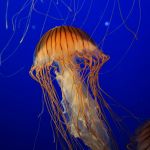 Overview:
Overview:Various jellyfish—including the Portuguese Man-of-War and box jellyfish—are found along Florida’s coast. Their stings can range from mild irritation to severe pain and, in rare cases, trigger serious allergic reactions.
Clusters of jellyfish near shore, especially after storms or during seasonal blooms, signal that caution is needed.
Maintain a safe distance and avoid touching them. Always follow local beach advisories for the latest updates on jellyfish activity.
Stingrays are common in shallow coastal waters. Generally non-aggressive, they may sting if accidentally disturbed or stepped on.
Be mindful when wading in shallow areas, particularly on sandy bottoms where stingrays might be resting.
Shuffle your feet while walking in the water to alert stingrays of your presence, reducing the risk of accidental contact.
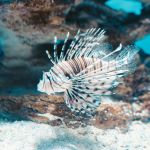 Overview:
Overview:An invasive species with a striking appearance, lionfish have venomous spines that can cause painful stings requiring medical attention.
Often found around coral reefs and rocky outcrops, lionfish are a common sight during snorkeling or diving excursions.
Observe lionfish from a safe distance—do not touch or handle them—to avoid envenomation.
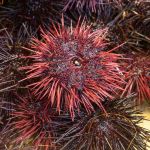 Overview:
Overview:Sea urchins have sharp spines that can inflict cuts, while cone snails, though small, can deliver venom through a harpoon-like mechanism.
In rocky or coral-rich areas, these creatures can be found on the ocean floor or hidden in crevices.
Wear protective footwear and refrain from handling unfamiliar marine life to minimize the risk of injury.
 Overview:
Overview:Sharks, often misunderstood due to media portrayals, play a vital role in maintaining marine ecosystems. In Florida’s waters, they rarely pose a threat to humans unless provoked.
While sharks are present, they typically avoid human interaction.
Observe sharks from a safe distance and avoid behavior that might attract or disturb them.
 Stay Informed: Regularly check local beach advisories and heed warnings from lifeguards and marine authorities. Trusted sources like NOAA and Florida’s emergency management sites provide current information.
Stay Informed: Regularly check local beach advisories and heed warnings from lifeguards and marine authorities. Trusted sources like NOAA and Florida’s emergency management sites provide current information.Explore detailed information on various marine hazards and safety practices from NOAA.
Access state-specific guidelines and real-time updates on Florida's beach and marine hazards.
Learn essential tips and best practices for staying safe while enjoying the beach.
Check your county or city’s official website for the latest updates on hazardous marine life.
Key Takeaways: Florida Marine Safety & Hazard Awareness
Florida’s ocean is a captivating and dynamic environment filled with diverse marine life, from jellyfish and stingrays to lionfish, sea urchins, cone snails, and sharks. By understanding the behaviors and habitats of these hazardous marine species, you equip yourself with essential ocean safety knowledge and coastal hazard awareness. Embrace best practices by staying informed, following local beach advisories, and heeding lifeguard instructions to safeguard your well-being. With these marine safety tips in mind, you can enjoy Florida’s pristine beaches and vibrant underwater world with confidence and care.
Disclaimer: The links and content provided on this page are for informational purposes and your convenience. The Florida Department of Health (DOH) does not endorse, approve, or guarantee the products, services, or opinions offered on external websites. Furthermore, the DOH is not responsible for the accuracy, content, or availability of these external sites. For questions or concerns, please contact the external site directly.
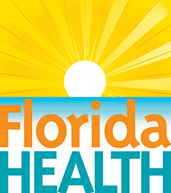


Connect with DOH